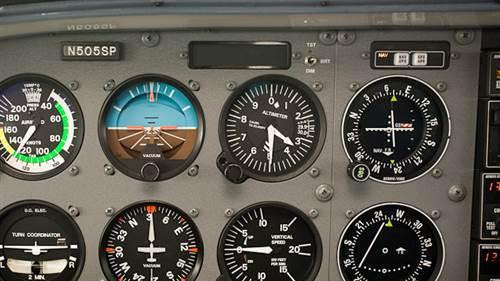
Trim Tip / Most trim tabs are called servo tabs and move in a direction opposite to the primary control surface it affects. elevator up (as in a climb)—trim tab moves down. Elevator down (as in a descent)—trim tab moves up. The illustration is an anti-servo tab and moves with the elevator.
Trimming allows the pilot to fine-tune a flight condition so that it can be maintained in hands-off flight. That gives the passengers a nice ride and relieves the pilot’s workload. The magic of pitch trim is that once your trainer has been trimmed, your airspeed will not change until you reconfigure.
It’s about touch. The trim-savvy pilot waits until the aircraft has stabilized in the desired flight condition—let’s say leveled off in cruise at 100 knots after a climb—before trimming. The skillful trimmer doesn’t fiddle with trim controls whenever a pitch disturbance upsets things. Rather, the pilot allows the aircraft’s inherent stability to restore the trimmed condition. This design characteristic lets the pilot turn to other duties, helping to avoid overcontrolling as well as pilot fatigue.

Step One: Level off
Lower the pitch attitude until the rate of climb reads zero. This will require holding forward pressure on the yoke. Let the aircraft accelerate toward cruise airspeed. Increase yoke pressure as necessary (because the aircraft was trimmed for climb speed, not cruise); maintain a pitch attitude that holds level flight. In an aircraft with a fixed-pitch propeller, rpm will increase during this phase. If it is difficult to hold sufficient forward pressure, some trim may be used to maintain positive pitch control (but this is not the ultimate goal of trimming, as you will see).
Step Two: Set the power
As airspeed approaches the desired cruise value, throttle back the rpm or manifold pressure to the value that your performance chart recommends for the desired cruise airspeed. Be patient during this phase. Let the aircraft accelerate to a steady cruise speed before moving on to the next step.
Step Three: Add and adjust
Apply nose-down trim in small but sure increments until your hand pressure on the yoke or stick is no longer required. Ensure that this is the case by releasing the yoke and flying hands-off, maintaining your heading with gentle rudder pressure.
Step Four: Watch what happens
Monitor your instruments for constant ASI and altitude. (If trimming for a climb or descent, monitor for the desired airspeed or rate of vertical change.) If corrections are needed, make them in the same sequence as above.Common Mistakes
Not having a plan.
Don’t use trim as an elevator control! Trim for a specific power/pitch combination.Not waiting until the aircraft has reached a steady state.
Impatience or distraction frequently causes pilots to rush the process. Trimming can’t achieve its goal if the aircraft is not established in the desired flight condition—whether level cruise, or climbing or descending at a constant rate or constant airspeed.‘Chasing’ pitch or airspeed variations.
Turbulence can disrupt a trimmed condition, but dynamic stability will cause the aircraft to undergo a series of gentle, diminishing oscillations that restore it. A pilot who does not understand this aerodynamic behavior tends to intercede too quickly, and never quite finishes what he starts before the next disturbance begins the process all over again.Changing the power setting after trimming is completed.
An aircraft that you trimmed for level flight at 100 knots with 2,200 rpm will descend at 100 knots if power is reduced. It will climb at 100 knots if power is increased. So if you change the power setting but attempt to maintain level flight, the result will be a new cruise airspeed—for which you must retrim.


